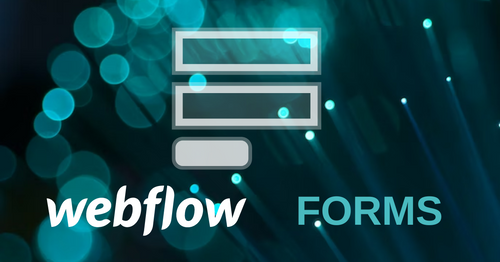In today's digital landscape, data quality is of utmost importance. Ensuring that the data submitted through your Webflow forms is accurate and valid is crucial. Email validation plays a pivotal role in this process, ensuring that email addresses entered by users are genuine and correctly formatted. As a seasoned expert in Webflow, I'm here to guide you through the comprehensive techniques and best practices of email validation in Webflow forms. By the end of this guide, you'll possess the expertise to seamlessly implement email validation, enhancing data quality and user experience.
The Importance of Email Validation in Webflow Forms
Before we dive into the technical aspects of email validation in Webflow forms, let's understand why it's essential.
1. Data Accuracy
Email validation ensures that the data collected through your forms is accurate and reliable, reducing the risk of errors and invalid submissions.
2. User Experience
Validating email addresses enhances the user experience by providing immediate feedback, preventing input errors, and ensuring users receive important communications.
3. Security
Email validation is a fundamental step in protecting your forms and applications from potential vulnerabilities and misuse.
4. Compliance
In certain industries, such as healthcare and finance, compliance regulations mandate accurate email validation to protect sensitive information.
Techniques for Email Validation in Webflow Forms
Now, let's explore the techniques for email validation in Webflow forms. Webflow offers several features and customization options to implement robust email validation.
1. Built-in Webflow Form Validation
Webflow provides built-in validation options for form fields, including email fields. To enable email validation for a form field, follow these steps:
- Select the form field in the Webflow Designer.
- Go to the "Settings" tab.
- Under "Validation," select "Email."
This simple step ensures that the user-entered data is a valid email address.
2. Custom Error Messages
Customize the error messages users see when they enter an invalid email address. This can be done by modifying the field's settings in the Webflow Designer. Providing clear and user-friendly error messages enhances the user experience.
3. JavaScript Validation (Advanced)
For more advanced email validation requirements, you can implement JavaScript-based validation. While this approach requires coding knowledge, it provides greater flexibility and customization options.
Here's a simple example of JavaScript-based email validation:
function validateEmail(email) {
const regex = /^[A-Za-z0-9+_.-]+@(.+)$/;
return regex.test(email);
}
You can integrate this function with your Webflow form's submission process to ensure email validation.
Expert Insights on Email Validation in Webflow Forms
To further enhance your understanding of email validation in Webflow forms, consider these expert insights:
1. User-Friendly Feedback
Provide clear and concise error messages to users when email validation fails. Help users understand what went wrong and how to correct it.
2. Regular Testing
Regularly test your email validation logic with various email address formats and edge cases to ensure accuracy and reliability.
3. Server-Side Validation
While client-side validation in Webflow is crucial, it should be complemented with server-side validation to enhance security and data integrity.
4. Regular Updates
Stay updated with Webflow's features and updates related to form validation to leverage new capabilities and improvements.
Common Questions about Email Validation in Webflow Forms
As an expert in email validation, I understand the common questions that developers may have. Here are answers to those queries:
1. Can I Customize Email Validation in Webflow Forms?
Yes, you can customize email validation by modifying field settings and error messages in the Webflow Designer. For more advanced customization, consider JavaScript-based validation.
2. Is Email Validation in Webflow Forms Secure?
Webflow's built-in email validation is secure for most use cases. However, for advanced security measures, consider implementing server-side validation.
3. Can I Implement Real-Time Validation in Webflow Forms?
Webflow's built-in validation provides real-time feedback to users as they fill out forms, enhancing the user experience.
4. How Often Should I Update Email Validation Logic in Webflow Forms?
Regularly update your email validation logic to adapt to changing email address formats and evolving security threats.
5. Is Server-Side Validation Necessary in Webflow Forms?
While client-side validation in Webflow is important, server-side validation is crucial for security and data integrity. Always implement both for comprehensive protection.
In conclusion, email validation in Webflow forms is a fundamental practice for web developers seeking to ensure data accuracy, user experience, and security. By harnessing the techniques outlined in this comprehensive guide and addressing common questions, you can leverage email validation to maximize the accuracy of user data and enhance data integrity in your Webflow-powered forms and applications. Embrace the power of email validation in Webflow, and your users will thank you for the seamless and secure experience.



